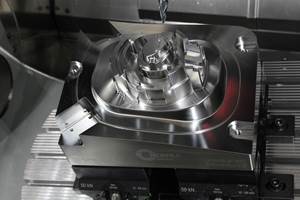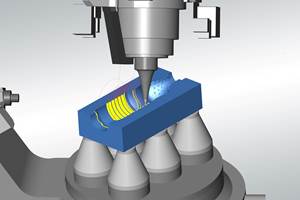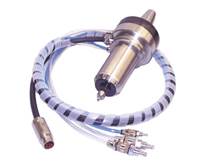Equipment Retrofits Increase Shop Speeds, Feeds
Equipment retrofit perspectives from the trenches.
While investing in new equipment is paramount to thriving is today’s competitive business climate, unfortunately it is not always feasible given the uncertain state of the economy. An alternative is to retrofit current machine tools with new hardware—controls, wiring. The cost is less and newer controls can actually improve machine tool performance by increasing speed and feedrates—which will decrease leadtimes!
Why Retrofit?
Edward Szymanski, Vice-President of Do-Rite Die & Engineering (South Chicago Heights, IL), notes that the VMC that the company originally purchased in 1998 began to wear. “The original company we purchased the machine from was acquired, and although they continued to service the machine, the original software and service people left the company,” Szymanski explains. “It became more difficult to troubleshoot the problems we were having. Replacement parts were becoming obsolete and could not be found. Since the iron was in good shape we decided to look for an alternative to replacing the machine.”
According to Roy Thomas, CNC supervisor at Patterson Mold & Tool Inc. (St. Charles, MO), the HMC the company purchased was a used machine that came out of a factory in Japan, and was in very good shape mechanically, but prone to excessive downtime due to a 25-year-old control that was no longer supported. “Many of the replacement parts had quoted leadtimes of up to six months, and were priced as ‘specials,’” Thomas notes. He decided the time was right to retrofit.
Over at CDM Tool & Mfg. Co., Inc. (Hartford, WI), President Brian Priestaf notes that although the company has always purchased high quality machines and taken good care of them, over time the controls get tired—as a result of the electrical wiring or the circuit boards. He then explored the prices for purchasing new equipment versus retrofitting current equipment. “At that point we put brand-new controls on two of our machines,” Priestaf explains. “We also felt very comfortable with a retrofit company we had worked with in the past. Whenever you retrofit, there is some worry about how the marriage will take place between the machine tool and the control. Because we had other brand-new controls from this company we chose to work with, we had no problems with them whatsoever. We felt confident the new controls would work well from the control side of it. The only gray area was the ‘marriage’ that took place. After extensive discussions with them we felt confident we could go forward and it has worked out very well for us.”
The Process
Once Patterson Mold & Tool’s Thomas decided to retrofit, it was a smooth process. “I chose a retrofitter that I had used before and had confidence in,” he notes. “Fortunately, we were already familiar with the operation of the new control, so that kept training to a minimum.”
Once Do-Rite Die & Engineering made the decision to retrofit, Szymanski and his brother Al asked some questions at a local AMBA meeting and decided the company’s graphite mill would be a good candidate for a retrofit. “It took about three weeks to do the retrofit and cost about $35,000.00,” Szymanski explains. “The cost to replace this machine would have been somewhere in the neighborhood of $250,000.00. After the retrofit was completed it took about two days of training before we were up and running. The retrofit company came out about three weeks later to do some follow-up training.”
Priestaf of CDM Tool obtained pricing from several vendors. “I noticed that they were very competitive,” Priestaf says. “I also looked at each company’s staying power, the documentation we would receive, and the quality of controls they offered.
“When looking for a retrofitter ask them what other work they have done,” Priestaf continues. “Get a list of their customers and call them just as you would research anything. See how long they have been in business. I felt comfortable with our retrofitter’s staying power. And they weren’t using unusual controls. They really spec’d things out with confidence. They talked about open architecture controls vs. proprietary. Proprietary could have benefits, but also be problematic if something were to go wrong. We chose the open-architecture controls because they would be more recognizable to the industry and easier to replace if necessary.”
Retrofit Benefits
Less downtime and better feedrates are the main benefits realized by retrofitting. Do-Rite’s Szymanski notes that faster feedrates and better surface finishes have resulted in faster production times for electrodes and reduced benching time for the company’s molds. “The retrofit allowed us to get through a big push of new tool construction,” he states. “I have to take the machine out of service for a few weeks to get some other work done to it, but our plan for the future is to be able to sell our services as electrode manufacturers for tool shops that do not have that capability.”
Thomas of Patterson Mold & Tool adds, “We have seen virtually no downtime due to electronic issues anymore, and when there are issues, they are much easier to diagnose. We also have faster and smoother axis feedrates. The cost to retrofit was about one-eighth the cost of a new machine with similar axis travels, and the savings versus buying a new machine allowed us to invest in new technologies in other areas of our business.”
“Downtime is an important factor,” CDM Tool’s Priestaf emphasizes. “With our old controls we did have downtime. We do use these machines every day so we wanted to make sure whatever controls we put on them was robust and would withstand our environment. Our plant is clean and air-conditioned so there aren’t great temperature fluctuations, but again, sometimes turning them off and on can cause problems too. Our retrofitting company stood by their word; and when they knew the machine would be down for a period of time they had a plan in place so that all of the materials were here on-site before they decommissioned the machines. When they were pulling off the old controls and putting on the new ones we had minimal downtime—which is very crucial.”
Priestaf concludes that retrofitting has been a positive experience. “We are getting more out of the machine tools because the speeds and feeds on the machines we did buy have some pretty good spindle RPMs; and we believe the controls the machines were initially built with were pretty conservative,” he explains. “Now we are getting faster interpolation and look-aheads on the controls so we are able to machine things faster and yet not damage the machine. We are getting more out of them than when the original controls were on them.”
For More Information:
CDM Tool & Mfg. Co., Inc / (262) 673-5620
brianpriestaf@cdmtool.com / cdmtool.com
Do-Rite Die & Engineering / (708) 754-4355
al.do-rite@sbcglobal.net
Patterson Mold & Tool Inc. / (636) 940-9988
roy.thomas@pattersonmold.com / pattersonmold.com
Related Content
Machining Center Spindles: What You Need to Know
Why and how to research spindle technology before purchasing a machining center.
Read MoreTen Things You Need to Know about Circle Segment Milling
Considerations for evaluating if circle segment end mills or conical barrel cutters are right for your mold machining applications.
Read MoreCustomized CAM Strategies Improve Five-Axis Blow Mold Machining
The proper machining process and workflow can impact blow mold production, making your CAM software selection critical.
Read MoreThe In's and Out's of Ballbar Calibration
This machine tool diagnostic device allows the detection of errors noticeable only while machine tools are in motion.
Read MoreRead Next
How to Lower Leadtimes Through Spindle Retrofits
By adding a secondary high-speed spindle to their machining centers, moldmakers can gain higher speeds at a lower cost.
Read MoreHow to Use Continuing Education to Remain Competitive in Moldmaking
Continued training helps moldmakers make tooling decisions and properly use the latest cutting tool to efficiently machine high-quality molds.
Read MoreReasons to Use Fiber Lasers for Mold Cleaning
Fiber lasers offer a simplicity, speed, control and portability, minimizing mold cleaning risks.
Read More
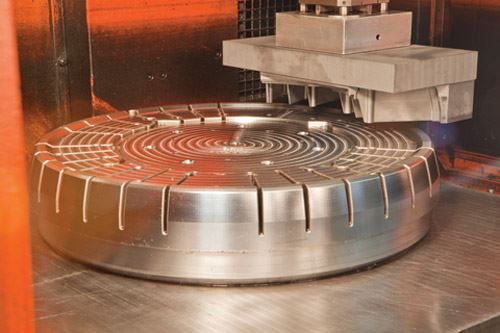
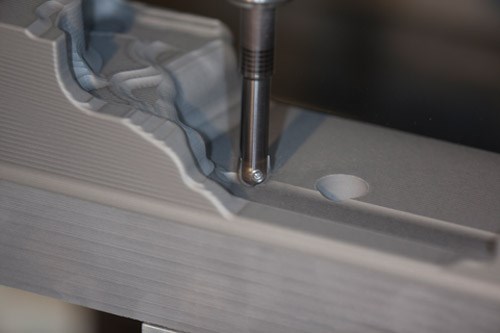

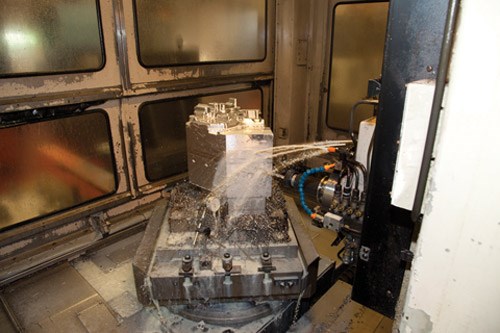





.jpg;maxWidth=300;quality=90)

_300x250 1.png;maxWidth=300;quality=90)











